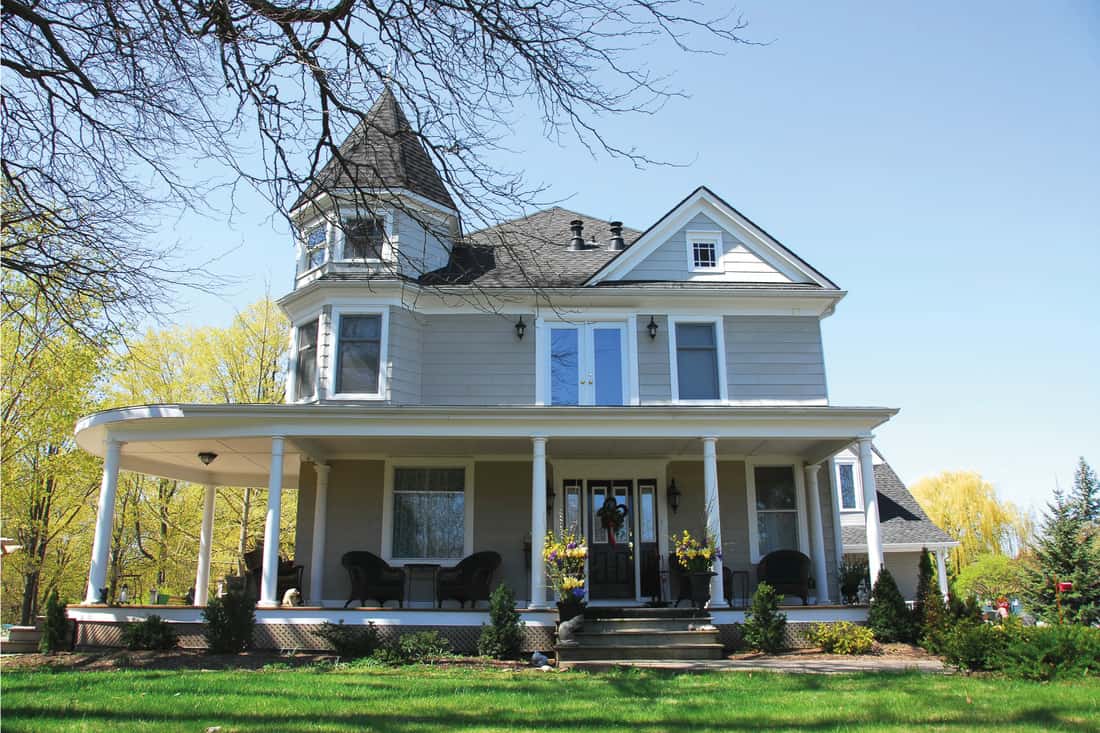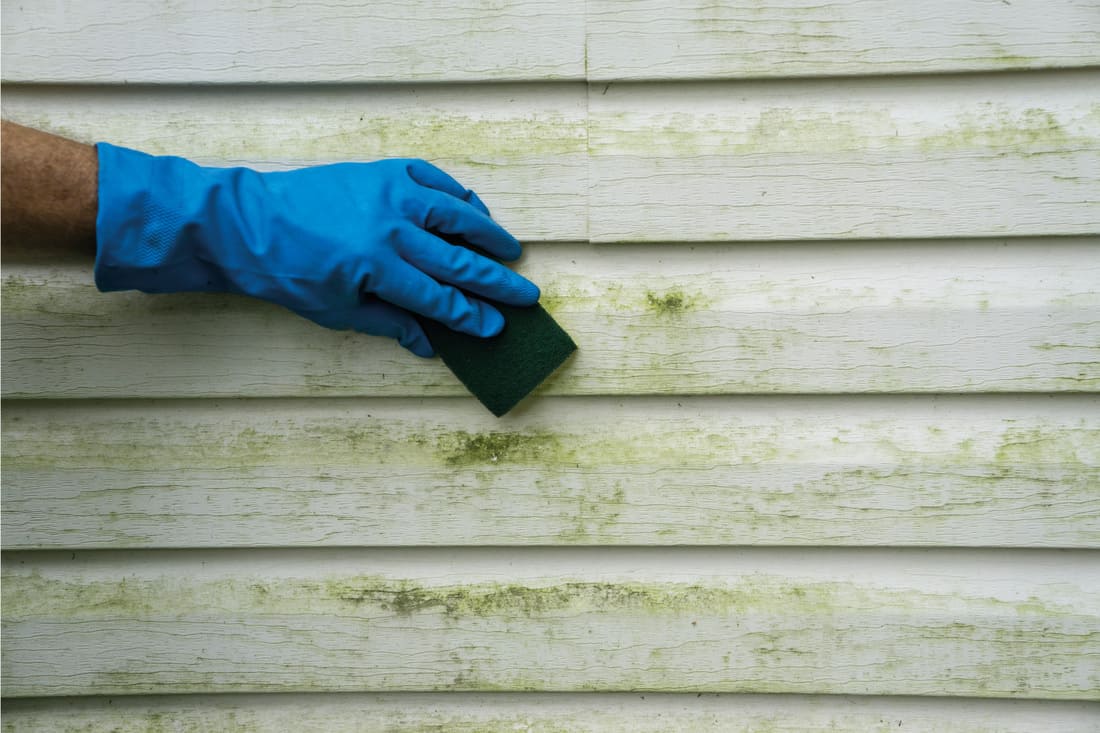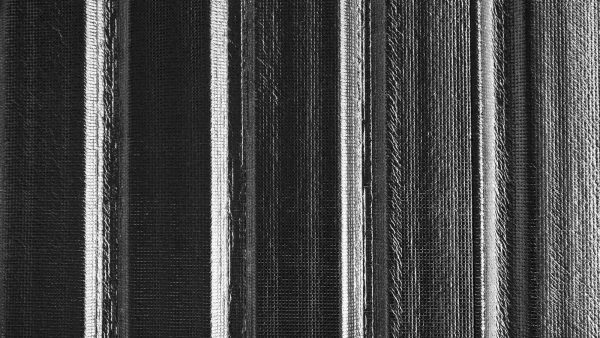Until recently, when vinyl siding began looking old and worn, homeowners had just one option: replace it. But advances in paint manufacturing have led to the development of paints that adhere to vinyl, making repainting a viable -- and less expensive -- alternative. If you're considering painting your vinyl siding to give it a fresh, new look, you may be wondering how much this option will cost. We've done the research, and we have the answers for you!
The cost to have the vinyl siding on a 1500-square foot house painted by a contractor ranges from $2,000 to $6,300, with a national average of $3,700. This includes paint/supply costs of $400-$1,100 and labor cost of $1,600 - $5,200.
Of course, many factors determine where the cost of your project will fall within this range. These include the condition of your siding, whether you DIY or hire a professional, and the quality of paint and primer you select. You may also want to consider how long the paint will last, whether to replace your siding instead of painting it and which option will boost your home's resale value the most. We'll discuss each of these questions below, so read on!

What Factors Determine The Cost Of Painting Vinyl Siding?
Five factors determine the cost of painting vinyl siding:
- The size and shape of your house
- The condition of your existing vinyl siding
- The cost of labor where you live
- Your decision to DIY or hire a professional
- The quality of primer and paint you select
Let's start with the three factors that are basically out of your control; then, we'll discuss the two that you do have some control over.
Size And Shape Of House
The size and configuration of your house play a significant role in determining the cost. Of course, the more square footage you have, the higher your costs for labor and materials. For example, a 1,500-square foot house with a simple one-story rectangular footprint has about 2,500 square feet of siding. A two- or three-story home, or one with unusual exterior features like turrets or lots of trim, will add complexity to the job and raise the cost of labor.

Painting the siding of this multi-story Victorian house will be a complicated job.
Condition Of Existing Siding
The condition of your siding is another factor in the cost of your job. If the protective colored coating is peeling, it may need to be scraped before painting. You (or a professional) should carefully inspect the siding before painting: identify any holes or cracks that need to be patched and look for areas where moisture has penetrated the protective barrier of the siding and into the underlayment. If your siding is in good shape, wonderful! If not, making repairs will add to the cost of your job.
We may include affiliate links and curated AI content to highlight top design styles.

Mildew and algae must be removed before painting, adding to the cost of the job.
Cost Of Labor
Where you live will also affect the cost of your paint job. In rural areas, labor costs tend to be lower, while large metropolitan areas are more expensive. The labor cost for a professional painter ranges from $50 - $100 per hour (an average of $2,000 - $3,500 for a 1500-square foot house).
DIY Or Professional
You may be tempted to save money by doing the job yourself, which is certainly a viable option. Painting vinyl siding is no more difficult than painting any other type of siding. However, it is labor-intensive, and the whole process will take you at least four days to complete. These are the steps you will need to follow:
Clean
Thoroughly clean your vinyl siding. For best results, wash it by hand, using a soft-bristled brush and a cleaning solution like the one shown below. Washing by hand ensures that you get all the grime and mildew off before painting, and it lets you inspect carefully for any holes, cracks, or other imperfections. Be sure to rinse the siding thoroughly.
Click here for vinyl siding cleaner on Amazon.
Prep
Allow your siding to dry for at least 24 hours after cleaning it. Then scrape any peeling areas and patch any holes or cracks that you found during your inspection. If you found major damage that can't be camouflaged or areas where the siding has been breached, and moisture has penetrated the underlayment, consider replacing your siding instead of painting it.
Click here for a vinyl siding patch kit on Amazon.
Prime
After you have made repairs, you are ready to prime. If your siding is relatively new and undamaged, and if you use high-quality paint specifically formulated for use on vinyl, you may be able to skip this step. However, doing so will almost certainly reduce the lifespan of your paint job. There are several circumstances in which you MUST prime:
- If the protective colored coating on your vinyl siding is peeling or worn away
- If you plan to use a paint color that is two or more shades lighter than the original vinyl color
- If you want the primer to help cover pitting or other imperfections
- To ensure the best adhesion and, therefore, a longer-lasting paint job.
Select an adhesive primer that is designed to work well on vinyl.
Click here for Zinsser Bulls Eye 123 Plus primer on Amazon.
Paint
Allow one full day for your primer to cure. For painting, wait for a two-day window when the temperature is mild, the humidity low, and the sun not too hot. Vinyl siding is susceptible to harsh weather conditions, and your paint job will last longer and look better if you work on mild days.
You may decide to use a paint sprayer, which is quicker than painting by hand but requires you to tape and cover trim, windows, and doors before painting. If you choose to paint by hand, use a 2" angled brush to cut in, and then use a roller with 1/2" nap for the body of the siding.
Click here for the Wagner power roller on Amazon.
Quality Of Materials
When painting vinyl siding, the quality of the primer and paint you choose will make a big difference in the job price and its appearance and longevity. Vinyl has three features that make it more complex to paint than other types of siding:
- Vinyl is less porous than other types of siding, so it requires primer and paints with strong adhesive properties.
- It expands and contracts as the outdoor temperature changes, so its paint must flex with it.
- Dark paint absorbs heat, which can cause the underlying vinyl to warp.
Highest Quality Paint For Vinyl
Two major manufacturers -- Benjamin Moore and Sherwin-Williams -- have developed paint lines specifically for use on vinyl siding and trim. These paints are highly adhesive and flexible; they are also resistant to mildew, cracking, bubbling, and fading. The Benjamin Moore Colors for Vinyl palette features 75 light-to-medium hues; Sherwin-Williams' VinylSafe paint line has 100 colors, including several darker hues that can be used without warping the underlying vinyl.
Click here for Benjamin Moore specialty vinyl paint on Amazon.
Less Expensive Alternative
A less expensive alternative is Behr Exterior Premium Plus. You can save significant time and money by using this primer-and-paint-in-one; however, you may not get as long-lasting results as you would with primer and paint designed specifically for use on vinyl.
Click here for Behr Premium Plus exterior paint-and-primer on Amazon.
Is It Cheaper To Paint Vinyl Siding Or Replace It?
In the short term, it is less expensive to paint your vinyl siding than to replace it. Across the nation, the average cost to have a professional contractor paint a 1,500 square foot vinyl-sided house is $3,700; the average cost to replace the siding is $5,500. However, there are some cases in which you should replace, rather than paint, your vinyl siding:
- If your siding is more than 20 years old, it is nearing the end of its useable life and should be replaced.
- If there is substantial pitting, cracking, or buckling on more than 40% of your siding, it will be more expensive to repair than replace.
- If there are gaps, buckles, or areas where moisture has gotten into the underlayment, it should be removed and the underlayment repaired before new siding is installed.
- If you want to increase the energy efficiency of your home, add new insulated vinyl siding.
Although replacing your siding in these circumstances will cost you more now, it will save you money (and headaches!) in the long term.
Click here for cedar-shake-look vinyl siding on Amazon.
How Long Does Paint Last On Vinyl Siding?
If you do a thorough job of cleaning and repairing your vinyl siding before you paint, and if you choose high-quality, vinyl-specific primer and paint, you can expect your new paint job to last for ten years. With lower-quality materials, you will probably have about five years before you need to repaint. If you use lower-quality materials and don't thoroughly clean the siding before painting it, the paint may begin to peel and bubble within three years or less.
Does Repainting Vinyl Siding Increase A Home's Resale Value?
Painting your vinyl siding can increase its resale value by 2% - 5%. It likely also speeds the sale of your home by adding curb appeal, which attracts more potential buyers. Replacing your existing vinyl siding can have a similar effect on both the speed of sale and the sale price.
In Conclusion
Painting your worn, tired-looking vinyl siding is a big job, but it can have a tremendous payoff, making your home more attractive and increasing its resale value. Whether you choose to hire a contractor or do it yourself, selecting high-quality materials makes a huge difference in the outcome.
You may also enjoy:









![Get Your Roof Ready: How to Apply Aluminum Roof Coating [Step by Step Guide]](https://homedecorbliss.com/wp-content/uploads/2023/08/shutterstock_1624204837-600x400.jpg)
